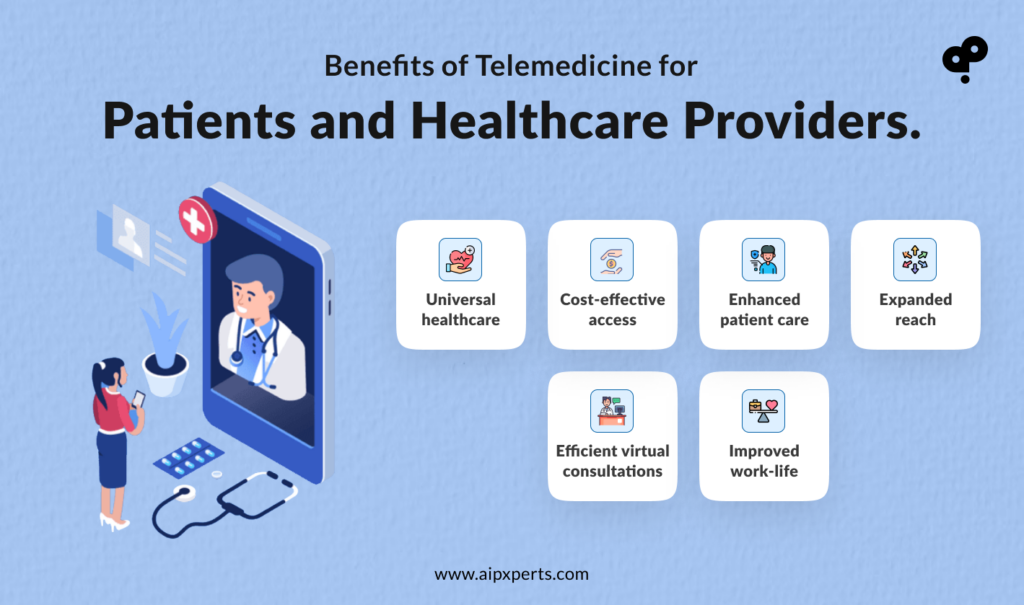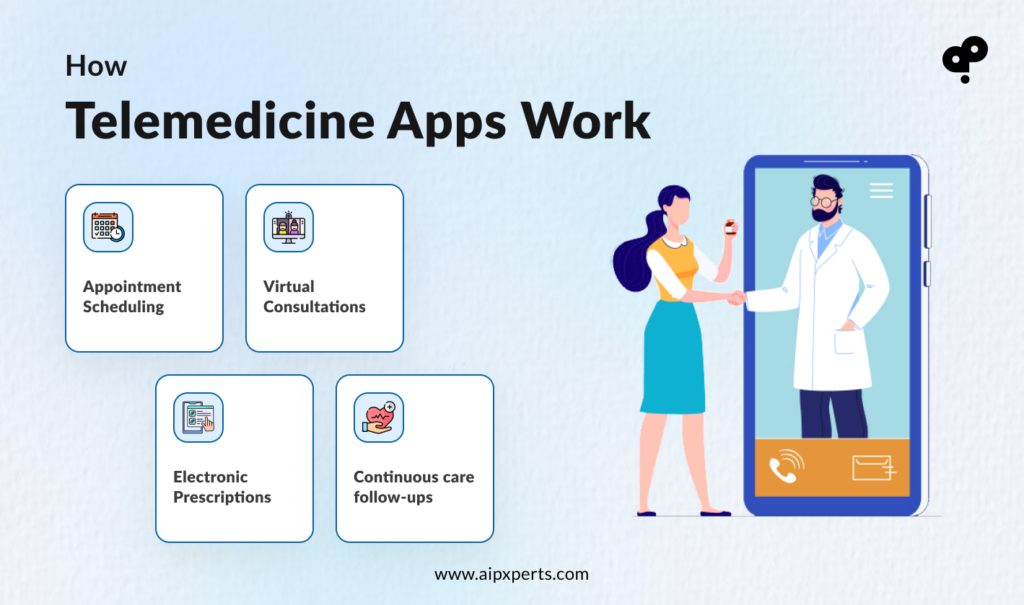In a world where digital technology has transformed numerous aspects of our lives, healthcare is no exception. Telemedicine and virtual healthcare are reshaping the healthcare industry and revolutionizing the way we access medical care. With just a few clicks or taps, patients can now connect with healthcare professionals remotely, saving time and eliminating the need for travel.
The convenience factor of telemedicine is undeniable. Whether it’s a routine check-up, a minor illness, or a follow-up appointment, patients can receive professional advice and treatment from the comfort of their own homes. However, telemedicine offers far more than convenience alone. It provides equal access to quality healthcare, bridging the gap between patients and healthcare providers, regardless of geographical location.
As we’ve witnessed the widespread adoption of telemedicine during the COVID-19 pandemic, it’s become increasingly clear that it is here to stay. Patients appreciate the convenience, efficiency, and cost-effectiveness of telemedicine. Healthcare providers benefit from being able to reach a wider patient population and deliver care more efficiently. The future of healthcare is evolving, and telemedicine is at the forefront, offering unprecedented access to quality care for all.
The Rise Of Telemedicine
Telemedicine has experienced a significant rise in popularity in recent years, accelerated even further by the COVID-19 pandemic. The concept of telemedicine has been around for several decades, but advancements in technology have made it more accessible and user-friendly than ever before. Patients can now consult with doctors, nurses, and specialists through video calls, phone calls, or even text messages, making healthcare more convenient and efficient.
The convenience factor of telemedicine is undeniable. Whether it’s a routine check-up, a minor illness, or a follow-up appointment, patients can receive professional advice and treatment from the comfort of their own homes. This eliminates the need for travel, long waiting times in crowded waiting rooms and potential exposure to contagious diseases. Telemedicine allows patients to seek medical assistance whenever they need it, without the hassle of scheduling appointments or taking time off work.
Benefits Of Telemedicine For Patients
Telemedicine offers numerous benefits to patients. One of the most significant advantages is the ability to access quality healthcare regardless of geographical location. In rural areas or underserved communities where access to healthcare facilities may be limited, telemedicine bridges the gap and ensures that everyone has equal access to medical expertise. Patients no longer have to travel long distances to receive specialized care, as they can connect with healthcare providers remotely.
Another benefit of telemedicine is the cost-effectiveness it offers. Traditional in-person healthcare visits often come with additional expenses such as transportation costs, parking fees, and potential time off work. With telemedicine, patients can save on these costs and receive the same level of care from the comfort of their own homes. Additionally, telemedicine can help reduce the overall cost of healthcare by minimizing unnecessary emergency room visits and hospital stays.
Telemedicine also enhances the continuity of care. Patients can easily follow up with their healthcare providers, ask questions, and receive ongoing support through telemedicine platforms. This improves patient compliance, leading to better health outcomes. Moreover, telemedicine enables patients to manage chronic conditions more effectively by monitoring symptoms, adjusting medications, and receiving timely guidance from healthcare professionals.

Benefits Of Telemedicine For Healthcare Providers
Telemedicine not only benefits patients but also offers significant advantages to healthcare providers. One of the key benefits is the ability to reach a wider patient population. With telemedicine, healthcare providers can extend their services beyond their immediate geographical area and cater to patients from different regions or even countries. This opens up new opportunities for healthcare practices, allowing them to grow their patient base and expand their reach.
Telemedicine also enhances the efficiency of healthcare delivery. By conducting virtual consultations, healthcare providers can see more patients within a given time frame compared to traditional in-person visits. This reduces waiting times and allows healthcare professionals to allocate their time more effectively. Additionally, telemedicine enables healthcare providers to streamline administrative tasks, such as scheduling appointments and managing patient records, leading to improved workflow and productivity.
Another benefit for healthcare providers is the potential for better work-life balance. Telemedicine offers flexibility in terms of scheduling and location, allowing healthcare professionals to work from home or choose their working hours more freely. This can result in reduced burnout and increased job satisfaction, ultimately benefiting both the healthcare providers and their patients.
Telemedicine Statistics and Trends
Telemedicine has experienced rapid growth in recent years, and its potential for further expansion is evident through various statistics and trends. According to a report by Grand View Research, the global telemedicine market size was valued at USD 56.4 billion in 2020 and is expected to grow at a compound annual growth rate (CAGR) of 22.4% from 2021 to 2028. This indicates a significant market demand and the increasing acceptance of telemedicine worldwide.
Furthermore, a study published in the Journal of Medical Internet Research revealed that 78% of patients were satisfied with their telemedicine experience. The study also found that telemedicine reduced healthcare costs by an average of 19%. These statistics highlight the positive impact telemedicine has on both patient satisfaction and cost-effectiveness.
In addition to the growth in telemedicine usage, technological advancements continue to shape the industry. Artificial intelligence (AI), machine learning, and wearable devices are being integrated into telemedicine platforms, enabling more accurate diagnoses, remote monitoring, and personalized treatment plans. These advancements further enhance the quality of care provided through telemedicine and contribute to its continued success.
How Telemedicine Apps Work

Telemedicine operates through various communication technologies, allowing patients and healthcare providers to connect remotely. The process typically involves the following steps:
1. Appointment Scheduling: Patients can schedule virtual appointments through telemedicine platforms or by contacting healthcare providers directly. This allows them to choose a convenient date and time for their consultation.
2. Virtual Consultation: During the scheduled appointment, patients connect with healthcare professionals through video calls, phone calls, or secure messaging platforms. The healthcare provider evaluates the patient’s symptoms, discusses medical history, and provides medical advice or treatment recommendations.
3. Prescriptions and Referrals: If necessary, healthcare providers can electronically send prescriptions to the patient’s preferred pharmacy or refer them to in-person specialists or diagnostic facilities.
4. Follow-up and Continuous Care: Telemedicine allows for easy follow-up appointments, where patients can discuss progress, ask questions, and receive ongoing support. This ensures continuity of care and helps healthcare providers monitor the effectiveness of treatments.
Telemedicine Platforms and Technologies

Telemedicine relies on various platforms and technologies to facilitate remote healthcare delivery. These include:
1. Video Conferencing: Video conferencing platforms, such as Zoom, Microsoft Teams, or specialized telemedicine software, enable real-time visual and audio communication between patients and healthcare providers. This allows for a more personalized and interactive consultation experience.
2. Mobile Applications: Many telemedicine services offer mobile applications that allow patients to connect with healthcare providers using their smartphones or tablets. These apps often provide additional features such as secure messaging, appointment scheduling, and access to medical records.
3. Remote Monitoring Devices: Telemedicine can be enhanced through the use of remote monitoring devices. These devices collect and transmit patient data, such as blood pressure, heart rate, or glucose levels, to healthcare providers. This enables remote monitoring of chronic conditions and early detection of potential health issues.
4. Electronic Health Records (EHR): EHR systems store and manage patient medical records electronically. Telemedicine platforms often integrate with EHR systems, allowing healthcare providers to access patients’ medical histories, lab results, and other relevant information during virtual consultations.
Top Telemedicine and Virtual Healthcare Solutions
Telemedicine is rapidly gaining popularity in India, offering a convenient and cost-effective way to access healthcare remotely. Here are the top five telemedicine apps in India:
1. Practo
Practo is India’s leading telemedicine app, offering a wide range of services, including video consultations, appointment booking, and online pharmacies. It has a comprehensive database of over 100,000 doctors and specialists across the country.
2. 1mg
1mg is another popular telemedicine app in India, offering similar services to Practo. It also has a strong focus on preventive healthcare, providing users with access to health articles, tips, and tools.
3. Tata Health
Tata Health is a telemedicine app from Tata Group, one of India’s largest conglomerates. It offers a wide range of services, including video consultations, appointment booking, lab tests, and medicine delivery.
4. Doctor 24×7
Doctor 24×7 is a telemedicine app that focuses on providing urgent care services. It offers 24/7 video consultations with doctors who can diagnose and treat a wide range of common conditions.
5. Lybrate
Lybrate is a telemedicine app that offers a variety of services, including video consultations, appointment booking, lab tests, and medicine delivery. It also has a strong focus on community building, providing users with a platform to connect with other patients and doctors.
Top Telemedicine and Virtual Healthcare Solutions From Around The World
1. Teladoc Health
Teladoc Health is the world’s leading telemedicine company, offering a wide range of services, including video visits, phone calls, and messaging with doctors. It is available in the United States, Canada, the United Kingdom, and several other countries.
2. Amwell
Amwell is another leading global telemedicine company, offering similar services to Teladoc Health. It is available in the United States, Canada, the United Kingdom, Australia, and several other countries.
3. MDLive
MDLive is a telemedicine company that offers a variety of services, including video visits, phone calls, and messaging with doctors. It is available in the United States, Canada, and the United Kingdom.
4. PlushCare
PlushCare is a telemedicine company that offers a variety of services, including video visits, phone calls, and messaging with doctors. It also has a focus on providing care for women’s health and sexual health. PlushCare is available in the United States.
5. Doctor on Demand
Doctor on Demand is a telemedicine company that focuses on providing urgent care services. It offers video visits with doctors who are available 24/7. Doctor on Demand is available in the United States.
These apps offer a convenient and affordable way to access healthcare remotely, from anywhere in the world. They are particularly useful for people who live in rural areas, who have difficulty travelling to doctor’s appointments, or who need care outside of regular business hours.
Challenges and Limitations Of Telemedicine
While telemedicine offers numerous benefits, it also faces certain challenges and limitations. One of the primary concerns is the lack of physical examination. Some medical conditions may require hands-on assessment, such as palpation, auscultation, or physical manipulation, which is not possible through remote consultations. However, advancements in remote monitoring devices and AI-enabled diagnostics are mitigating this limitation to some extent.
Another challenge is the potential for technical difficulties or connectivity issues. Stable internet connections and suitable devices are necessary for seamless telemedicine consultations. In areas with limited internet access or older populations unfamiliar with technology, accessing telemedicine services may be challenging.
Furthermore, not all healthcare services can be effectively delivered through telemedicine. Certain procedures, surgeries, or complex medical conditions may require in-person care. However, telemedicine can still play a crucial role in pre-and post-operative care, follow-up appointments, and ongoing management of chronic conditions.
Telemedicine in the post-pandemic world
The COVID-19 pandemic has accelerated the adoption of telemedicine and highlighted its importance in ensuring continuity of care during times of crisis. As the world gradually recovers from the pandemic, telemedicine is expected to continue playing a significant role in the future of healthcare.
Patients have experienced the convenience, efficiency, and cost-effectiveness of telemedicine during the pandemic and are likely to seek these benefits even after the crisis subsides. Healthcare providers have witnessed the advantages of telemedicine in reaching a wider patient population and delivering care more efficiently. As a result, many healthcare practices are integrating telemedicine into their long-term strategies.
Telemedicine is also expected to evolve further with advancements in technology. AI-enabled diagnostics, remote monitoring devices, and virtual reality (VR) applications are just some of the innovations that will enhance the quality and scope of telemedicine in the coming years. These advancements will enable more accurate diagnoses, personalized treatment plans, and immersive virtual healthcare experiences.
Conclusion: The future of telemedicine
Telemedicine and virtual healthcare solutions have transformed the healthcare landscape, providing patients with convenient access to quality healthcare and offering healthcare providers new opportunities for growth and efficiency. The COVID-19 pandemic has accelerated the adoption of telemedicine, demonstrating its resilience and importance in times of crisis.
As technology continues to advance and regulations adapt to the changing healthcare landscape, telemedicine will become an integral part of the future of healthcare. Its ability to provide equal access to quality care, regardless of geographical location, will ensure that more individuals can receive the medical attention they need. Telemedicine’s convenience, efficiency, and cost-effectiveness will continue to attract patients, while healthcare providers will benefit from increased reach and improved workflow. The future of telemedicine is promising, as it holds the potential to revolutionize healthcare and improve the overall well-being of individuals worldwide. From convenience to quality, telemedicine is here to stay.
Why Aipxperts is the best for building your Telemedicine app
Telemedicine and virtual healthcare solutions are becoming increasingly popular, and finding a tech partner who understands your unique needs and can help you develop a custom virtual healthcare platform that perfectly aligns with your needs is quite a challenge. With advanced technology and decades of experience, we at Aipxperts have helped a multitude of clients build solutions that overcome their challenges.
Aipxperts specializes in helping healthcare organizations build customized virtual health apps that meet their specific needs.
Aipxperts can help you build virtual health apps that make it easy for users to get information about their health conditions and symptoms and provide them with treatment options based on this information. Aipxperts can also help you build virtual health apps that can streamline your workflows and make your practice more efficient.
If you are looking for a reliable and experienced partner to help you build virtual health apps, Aipxperts is the perfect choice. Contact us today to learn more about our services and how we can help you make a difference in the healthcare industry.
Take a look at our portfolio to gain insight into the diverse range of projects we have delivered!
Telemedicine and virtual healthcare solutions | Hire experienced developers to develop telemedicine and virtual healthcare solutions from Aipxperts. Contact us for project estimates and enjoy a 15-day risk-free trial period.


